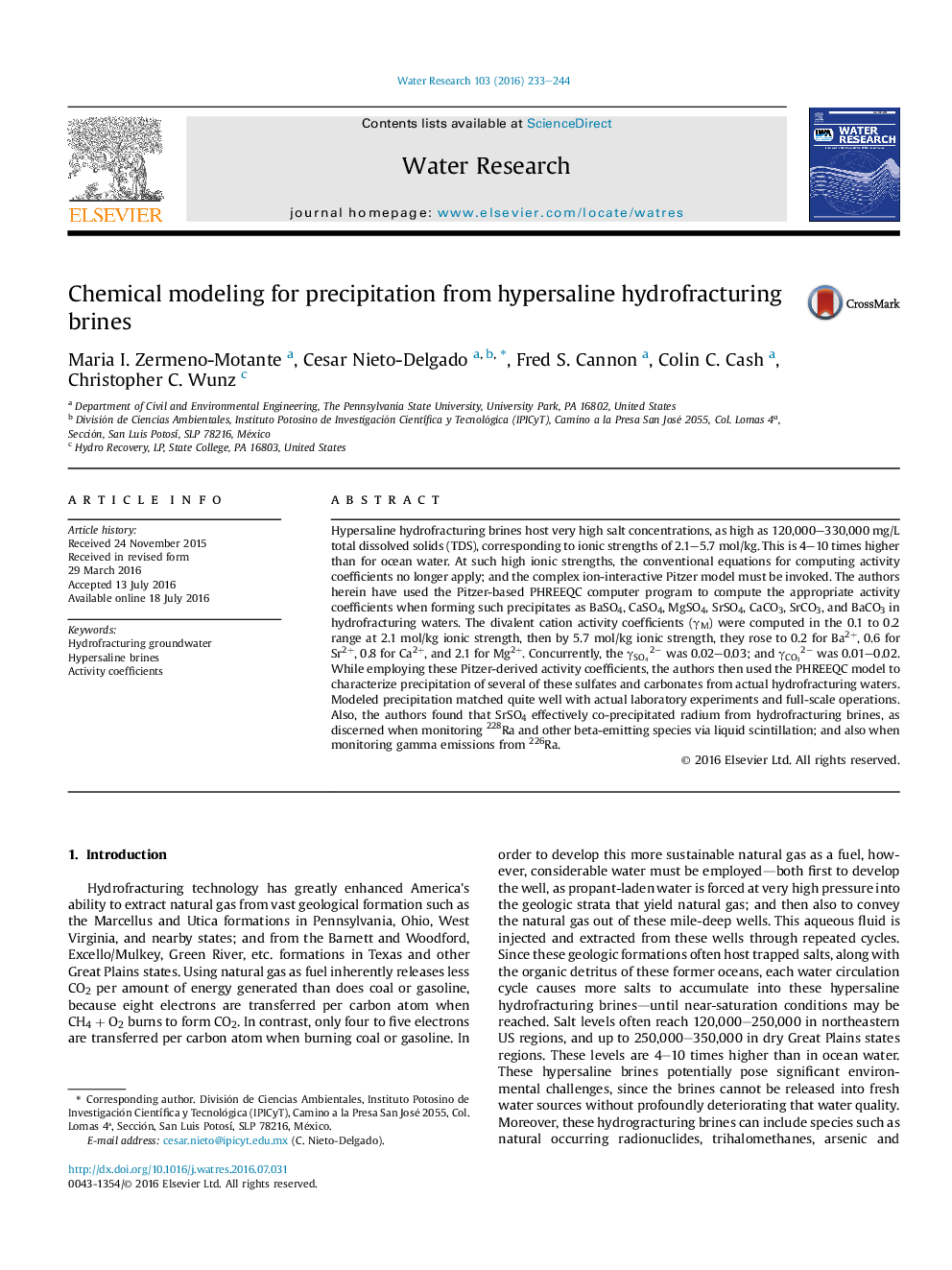| کد مقاله | کد نشریه | سال انتشار | مقاله انگلیسی | نسخه تمام متن |
|---|---|---|---|---|
| 6364470 | 1623065 | 2016 | 12 صفحه PDF | دانلود رایگان |
- Hydrofracturing brines (120-330Â g/L TDS) can be treated by chemical precipitation.
- Activity coefficient were computed by Pitzer model and presented in nomographs.
- Activity coefficients of divalent cations, range from 0.1 to 2.5 for IÂ =Â 1.2-7Â mol/kg.
- Modeled precipitation matched lab experiments and full scale operations.
- Radium can be efficiently removed by co-precipitation with SrSO4.
Hypersaline hydrofracturing brines host very high salt concentrations, as high as 120,000-330,000 mg/L total dissolved solids (TDS), corresponding to ionic strengths of 2.1-5.7 mol/kg. This is 4-10 times higher than for ocean water. At such high ionic strengths, the conventional equations for computing activity coefficients no longer apply; and the complex ion-interactive Pitzer model must be invoked. The authors herein have used the Pitzer-based PHREEQC computer program to compute the appropriate activity coefficients when forming such precipitates as BaSO4, CaSO4, MgSO4, SrSO4, CaCO3, SrCO3, and BaCO3 in hydrofracturing waters. The divalent cation activity coefficients (γM) were computed in the 0.1 to 0.2 range at 2.1 mol/kg ionic strength, then by 5.7 mol/kg ionic strength, they rose to 0.2 for Ba2+, 0.6 for Sr2+, 0.8 for Ca2+, and 2.1 for Mg2+. Concurrently, the γSO42â was 0.02-0.03; and γCO32â was 0.01-0.02. While employing these Pitzer-derived activity coefficients, the authors then used the PHREEQC model to characterize precipitation of several of these sulfates and carbonates from actual hydrofracturing waters. Modeled precipitation matched quite well with actual laboratory experiments and full-scale operations. Also, the authors found that SrSO4 effectively co-precipitated radium from hydrofracturing brines, as discerned when monitoring 228Ra and other beta-emitting species via liquid scintillation; and also when monitoring gamma emissions from 226Ra.
299
Journal: Water Research - Volume 103, 15 October 2016, Pages 233-244
